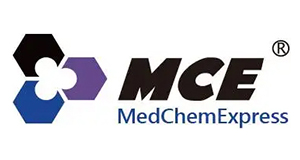Chloranil, CAS 118-75-2
Chloranil, CAS 118-75-2
SKU
MEXHY-Y0278-10.1
Packaging Unit
10mM/1mL
Manufacturer
MedChemExpress
Availability:
loading...
Price is loading...
Product Description: Chloranil (Tetrachloro-p-benzoquinone), an orally active metabolite of pentachlorophenol and hexachlorobenzene, is a widely used fungicide. Chloranil can induce ROS production. Chloranil induces neutrophil extracellular traps through the ROS-JNK-NOX2 pathway. Chloranil induces ferroptosis and neuroinflammation. Chloranil induces apoptosis of mouse embryonic stem cells[1][2][3][4][5] .
Applications: COVID-19-immunoregulation
Formula: C6Cl4O2
References: [1]Fu J, et al.The acute exposure of tetrachloro-p-benzoquinone (a.k.a. chloranil) triggers inflammation and neurological dysfunction via Toll-like receptor 4 signaling: The protective role of melatonin preconditioning. Toxicology. 2017 Apr 15;381:39-50. /[2]Liu Z, et al. Tetrachlorobenzoquinone exposure triggers ferroptosis contributing to its neurotoxicity. Chemosphere. 2021 Feb;264(Pt 1):128413. /[3]Zuehlke A, et al. Elevated 5-hydroxymethycytosine and cell apoptosis induced by tetrachloro-1,4-benzoquinone in mouse embryonic stem cells. J Environ Sci (China). 2017 Jan;51:1-4./[4]Lv X, et al. Tetrachlorobenzoquinone exhibits immunotoxicity by inducing neutrophil extracellular traps through a mechanism involving ROS-JNK-NOX2 positive feedback loop. Environ Pollut. 2021 Jan 1;268(Pt B):115921. /[5]Xu D, et al. Tetrachlorobenzoquinone induces acute liver injury, up-regulates HO-1 and NQO1 expression in mice model: the protective role of chlorogenic acid. Environ Toxicol Pharmacol. 2014 May;37(3):1212-20.
CAS Number: 118-75-2
Molecular Weight: 245.88
Compound Purity: 99.51
Research Area: Infection; Metabolic Disease; Inflammation/Immunology; Neurological Disease
Solubility: DMSO : 5 mg/mL (ultrasonic;warming;heat to 60°C)
Target: Apoptosis;Ferroptosis;Fungal;JNK;MyD88;Reactive Oxygen Species;Toll-like Receptor (TLR)
Applications: COVID-19-immunoregulation
Formula: C6Cl4O2
References: [1]Fu J, et al.The acute exposure of tetrachloro-p-benzoquinone (a.k.a. chloranil) triggers inflammation and neurological dysfunction via Toll-like receptor 4 signaling: The protective role of melatonin preconditioning. Toxicology. 2017 Apr 15;381:39-50. /[2]Liu Z, et al. Tetrachlorobenzoquinone exposure triggers ferroptosis contributing to its neurotoxicity. Chemosphere. 2021 Feb;264(Pt 1):128413. /[3]Zuehlke A, et al. Elevated 5-hydroxymethycytosine and cell apoptosis induced by tetrachloro-1,4-benzoquinone in mouse embryonic stem cells. J Environ Sci (China). 2017 Jan;51:1-4./[4]Lv X, et al. Tetrachlorobenzoquinone exhibits immunotoxicity by inducing neutrophil extracellular traps through a mechanism involving ROS-JNK-NOX2 positive feedback loop. Environ Pollut. 2021 Jan 1;268(Pt B):115921. /[5]Xu D, et al. Tetrachlorobenzoquinone induces acute liver injury, up-regulates HO-1 and NQO1 expression in mice model: the protective role of chlorogenic acid. Environ Toxicol Pharmacol. 2014 May;37(3):1212-20.
CAS Number: 118-75-2
Molecular Weight: 245.88
Compound Purity: 99.51
Research Area: Infection; Metabolic Disease; Inflammation/Immunology; Neurological Disease
Solubility: DMSO : 5 mg/mL (ultrasonic;warming;heat to 60°C)
Target: Apoptosis;Ferroptosis;Fungal;JNK;MyD88;Reactive Oxygen Species;Toll-like Receptor (TLR)

 Deutsch
Deutsch









